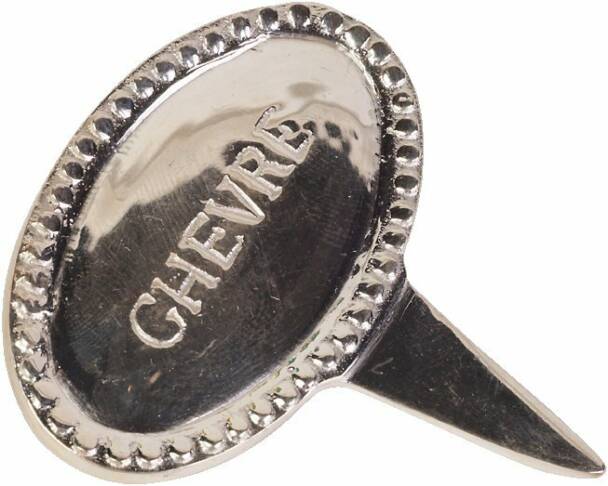
Très Belle Chèvre
Goat Dairy & Fromagerie

Featured in 225BatonRouge.com Magazine---May 27 to June 2008
ARTICLE---Got Her Goat
Got Her Goat
By Maggie Heyn Richardson
St. Martinville cheesemaker Wanda Barras’ goat herd is up to 125, and she produces over 100 pounds of cheese a week.
When she introduces you to the goats, she calls them by name. It’s like a kindergarten class,” says Copper Alvarez, executive director of the Big River Economic and Agricultural Development Alliance, describing St. Martinville cheesemaker Wanda Barras.
For two years now, Barras has wowed patrons of the Red Stick Farmers Market with her handmade farmstead chevre, fresh goat’s milk cheese produced from Barras’ herd of well-tended livestock. A longtime exotic bird breeder, Barras became interested in cheesemaking a decade ago when she went to Jackson, La., with a friend who had plans to purchase some LaMancha goats.
“They were so ugly! They had no ears,” recalls Barras, an obsessive animal lover. “I left with two of them.”
Barras says she hates to waste anything, and she began milking the goats and experimenting with making cheese and soap. The first run of ricotta-style cheese was a disaster.
“Oooh, it was a nasty mess!” she says, in the gentle lilt of a native Cajun. “I had that stuff all over the place.”
But that changed. Barras read and researched the ancient craft and attended national seminars for small-scale cheesemakers. Her husband built a cheesemaking room, and she outfitted it with the right equipment. She increased the herd of smart and docile LaMancha goats, and also added the Nubian variety, whose milk is high in butterfat. She played around with traditional recipes, but being a natural rule-breaker, she deviated until she felt the flavor and texture were perfect.
This year, the herd is up to 125, and she produces about [over] 100 pounds of cheese a week. Her foray into the notoriously difficult business has been well-timed.
“It’s a hot industry,” says Marci Wilson, executive director of the American Cheese Society, a 1,400-member national trade association. In recent years, consumer interest in cheese has increased substantially, and artisan cheesemaking, long the handiwork of Europeans, is becoming more common in the United States.
Still, it’s largely confined to areas outside of the southeast, where heat and humidity create additional challenges in an already laborious profession. A state like Wisconsin features 145 Cheese Society members, while Louisiana has only seven
.
However, Barras’ most noteworthy feature is not that she is a Louisiana producer, but that she is a farmstead producer, meaning the milk used to produce her cheeses is from her own herd. Most of the country’s artisan cheesemakers, even those who produce excellent cheeses, Wilson says, purchase milk from outside dairies. Few are like Barras, who controls her goats’ diets, manages their care, milks them and converts the milk into a finished product.
Barras garnishes her goat cheese with items such as Roma tomatoes, fresh herbs and sometimes edible flowers.
“That’s very rare,” Wilson says. “It’s wonderful.”
Barras, also a visual artist, creates handmade garnishes for each of her chevre wheels and discs. The signature Italian [Tuscan] features hand-dried Roma tomatoes, fresh herbs and olive oil. The roasted garlic and red bell pepper she says is meant to impart Parisian flavors. Dill with lemon and garlic [It's a Dilly] is gentle and fragrant. Another variety features a simple dusting of cracked pepper [and herbs and garlic [called Melange]. Some are garnished with edible flowers.
“People love them for parties,” Alvarez says. “If she’s not at the market, we always have people ask when she’ll be back.”
Barras generally follows the traditional European calendar of milking and producing cheese between Easter and All Saint’s Day, meaning now is a great time to find her. She only sells directly to consumers or through the Red Stick Farmers Market.
Don’t count on that changing anytime soon.
“I really don’t want to get any bigger,” she says.
She might run out of names.

